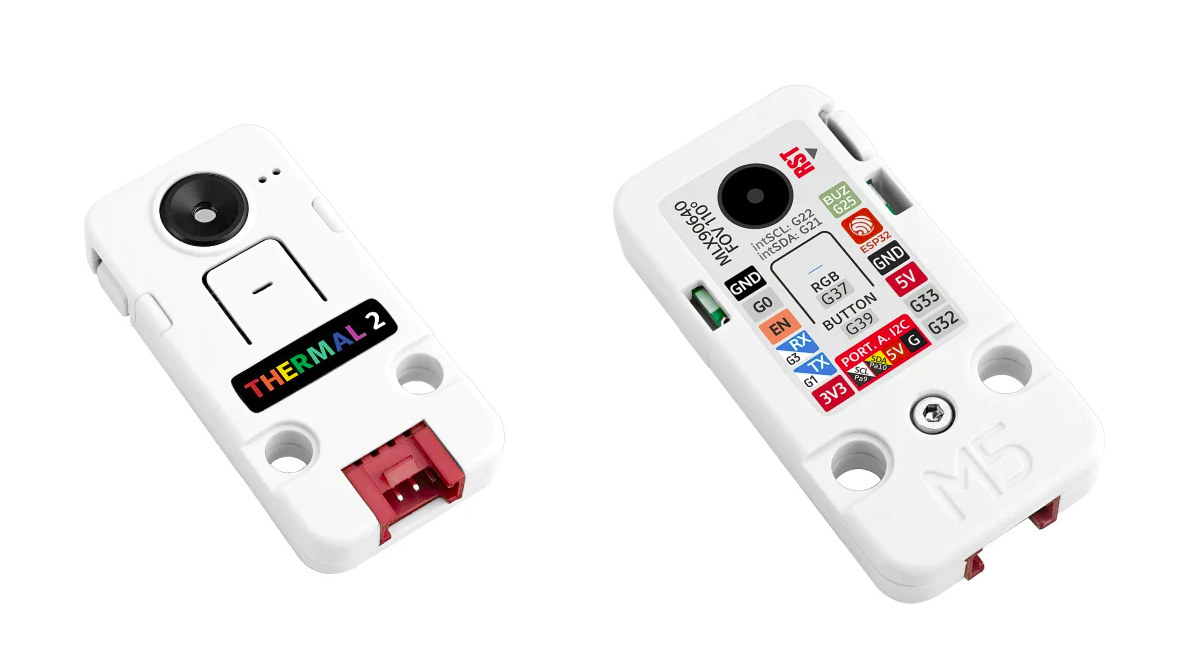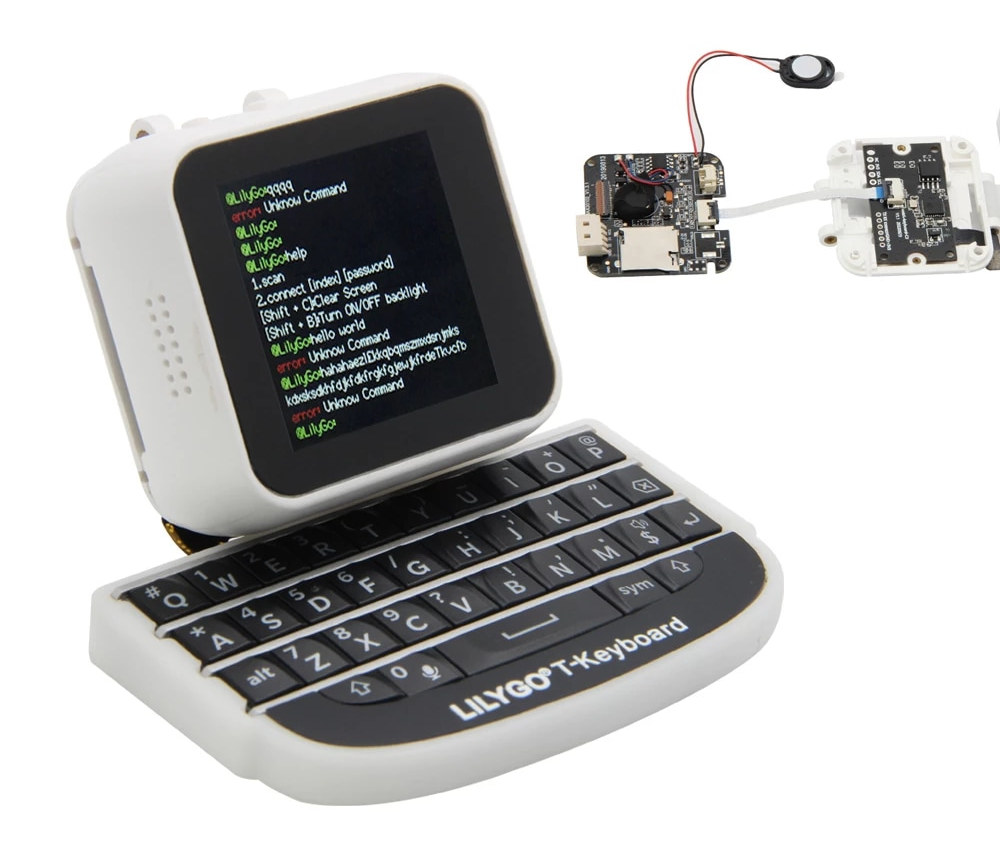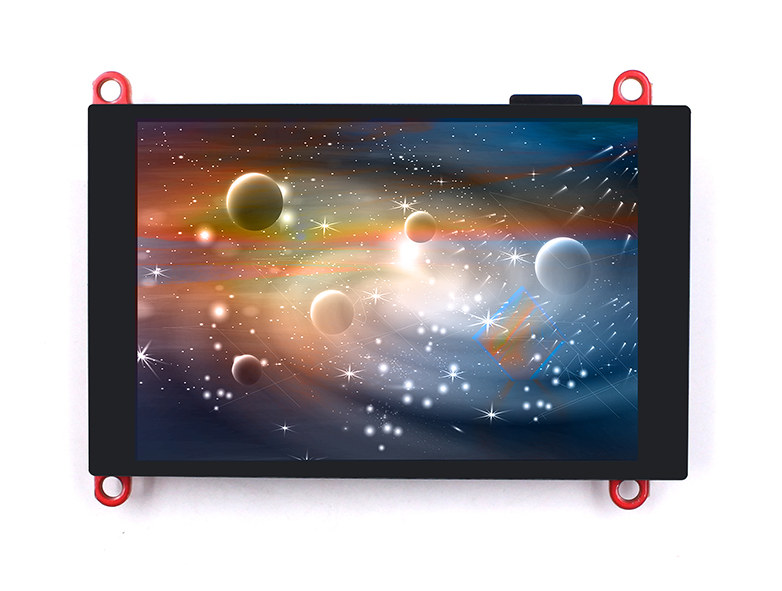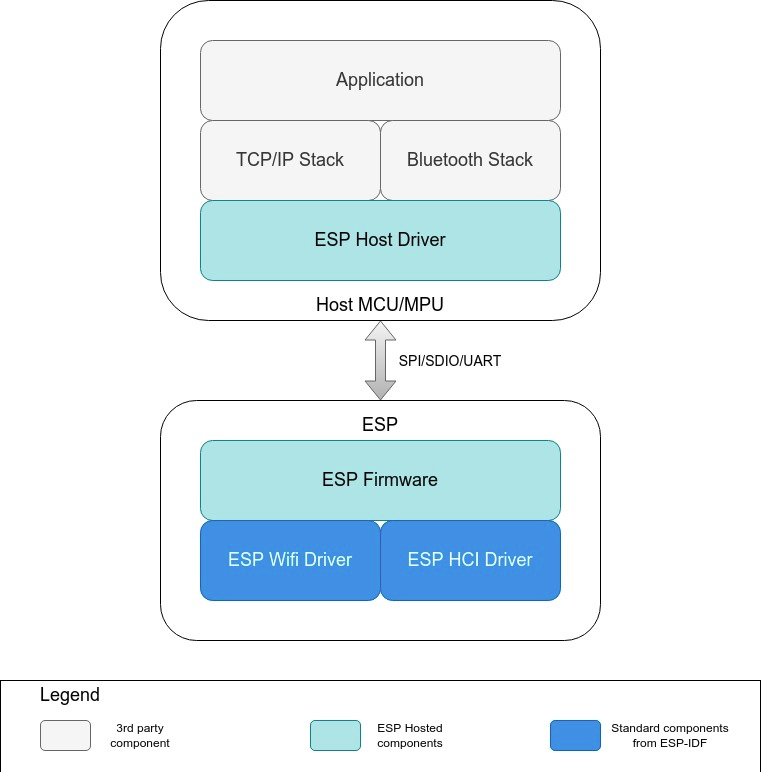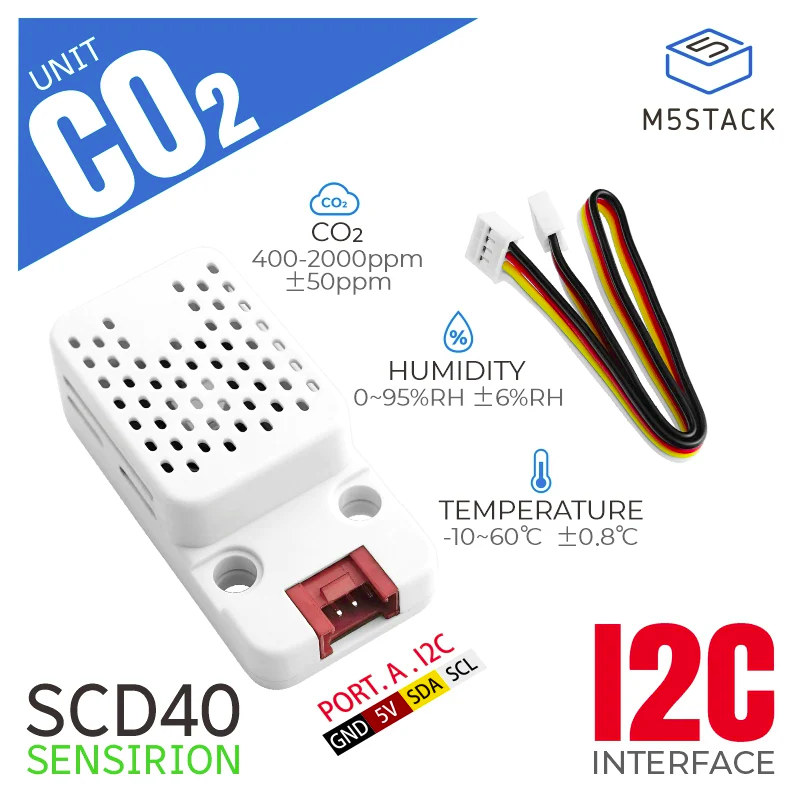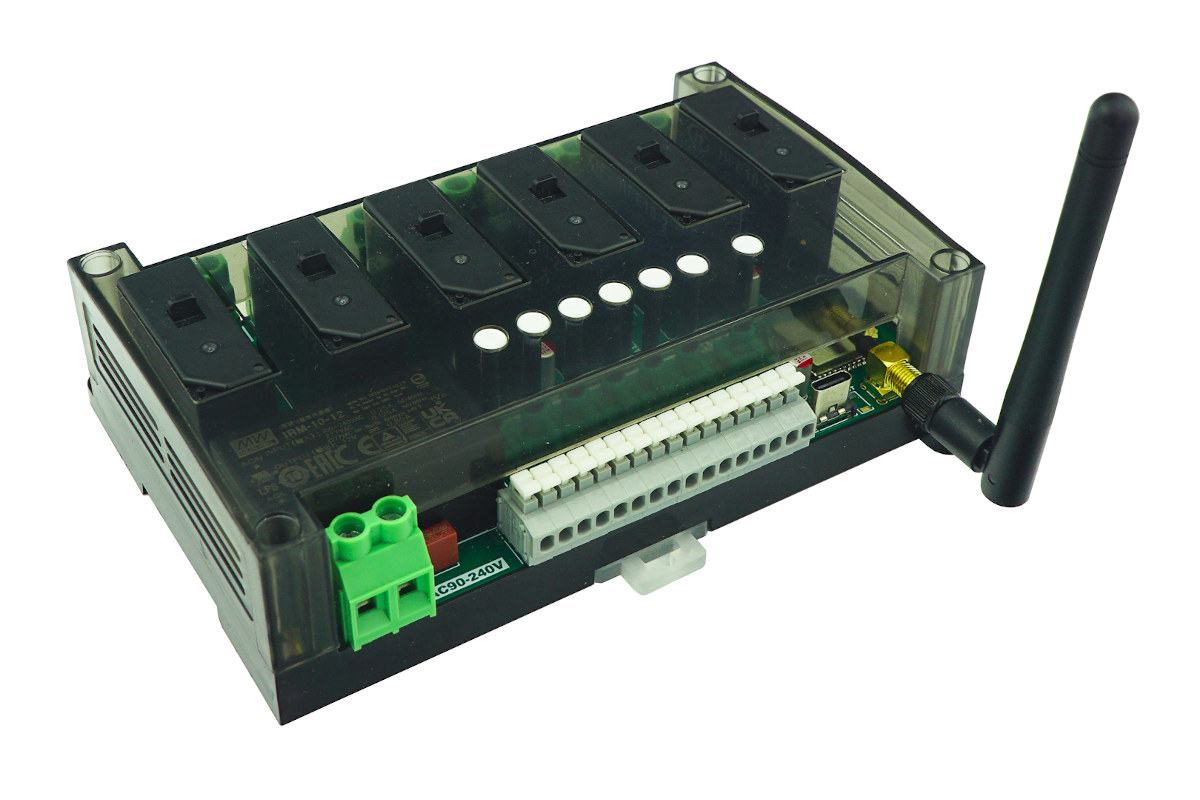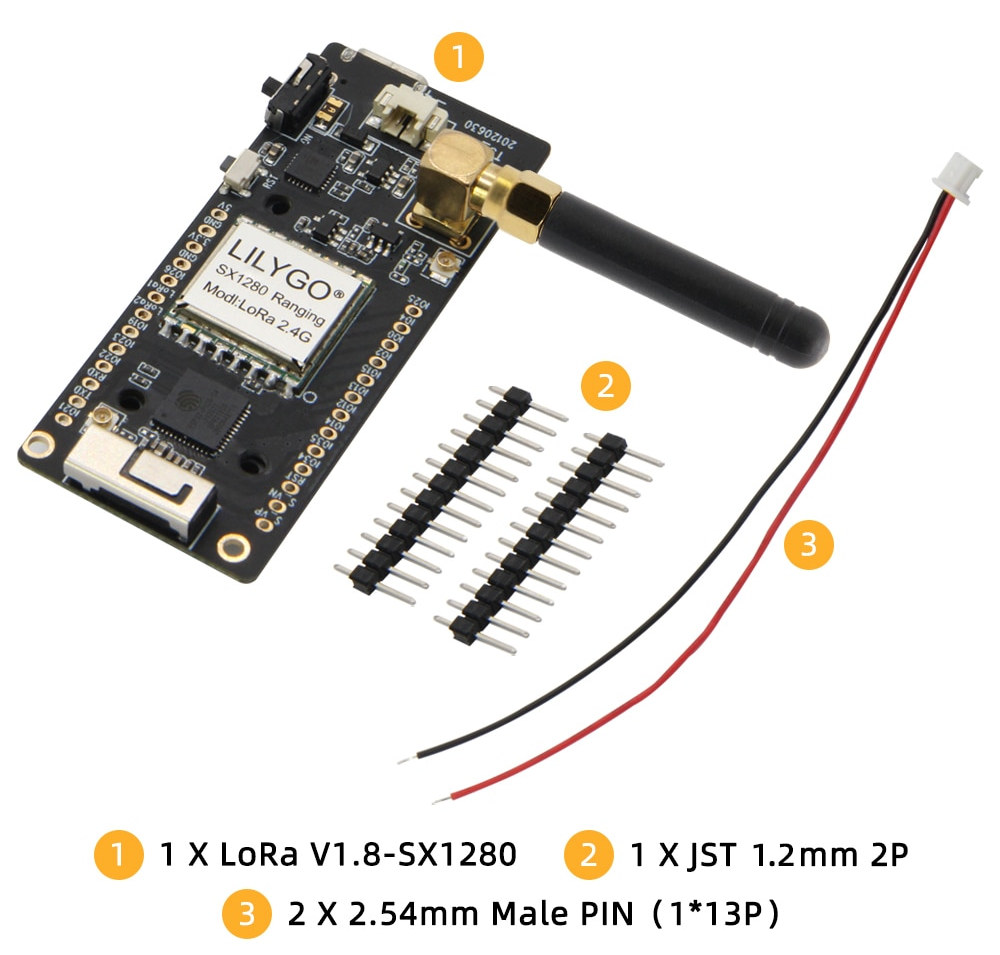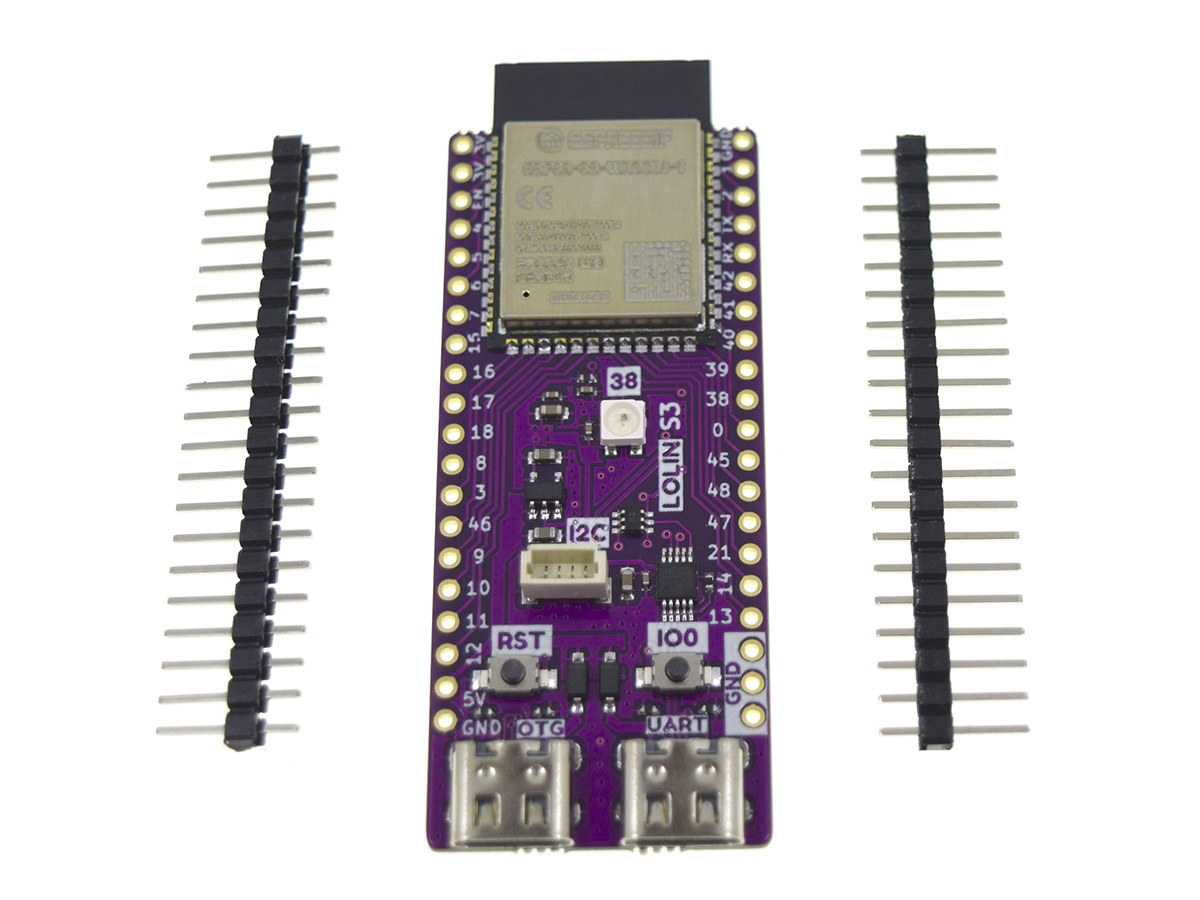We’ve already seen the ESP32 used with a thermal camera (Flir Lepton 3.5) in the tCam-Mini IR board, but M5Stack Thermal Camera 2 Unit offers a more affordable ESP32 thermal camera solution thanks to the MLX90640 IR array thermal camera with a 32×24 resolution. Based on the ESP32-PICO-D4 system-in-package (SiP) with a dual-core microcontroller offering WiFi and Bluetooth connectivity, the camera module offers a field of view of 110°x75°, and a temperature measurement range of -40°C to 300°C. M5Stack Thermal Camera 2 Unit specifications: SiP – ESP32-PICO-D4 system-in-package with ESP32 dual-core Tensilica LX6 cores, 448 KB ROM, 520 KB SRAM, 4MB SPI flash, 2.4 GHz WiFi 4 and Bluetooth 4.2 IR camera – Melexis MLX90640 Infrared (IR) sensor with 32×24 pixels IR array, range: -40°C to 300°C with +/-1.5°C resolution, FoV: 110°x75° (See datasheet) Expansion – Grove I2C HY2.0-4P interface (“Port A”) Misc – Reset button, passive buzzer, user RGB […]
T-Watch-Keyboard-C3 with ESP32 “watch”, ESP32-C3 keyboard looks like a miniature PC replica
T-Watch-Keyboard-C3 is a device that looks like a miniature PC replica comprised of an ESP32-C3 powered keyboard, and the TTGO T-Watch ESP32 programmable device with a 1.54-inch touchscreen display. The LilyGo TTGO T-Watch ESP32 programmable touchscreen display has been around for a while, and the company used to provide an accessory keyboard based on Microchip ATSAM20 Cortex-M0+ microcontroller that has now been replaced with ESP32-C3 WiFi and Bluetooth RISC-V microcontroller to create the T-Watch-Keyboard-C3 devices pictured below. T-Watch-Keyboard-C3 specifications: TTGO T-Watch MCU – ESP32-D0WDQ6 dual-core microcontroller @ 240 MHz with WiFi 4 and Bluetooth 4.x with 520KB SRAM Memory – 8MB PSRAM Storage – 16MB QSPI flash Display – 1.54-inch LCD screen USB – 1x USB Type-C port for power and programming via CP2104 USB to TTL chip Sensor – 3-axis accelerometer Misc – Power button, RTC Dimensions – 40 x 38 x 20 mm Weight – 43.19 grams […]
Makerfabs 3.5-inch TFT touchscreen display features ESP32-S3 SoC
Makerfabs has launched a 3.5-inch TFT touchscreen display with built-in WiFi and Bluetooth connectivity through an ESP32-S3 dual-core Tensilica LX7 microcontroller clocked at 240 MHz with vector instructions for AI acceleration. This display offers a 320×480 resolution through the ILI9488 LCD driver, uses a 16-bit parallel interface for communication with ESP32-S3 clocked at up to 20 Mhz making it suitable for smooth graphics user interface, and the company also claims it is smooth enough for video displays, but more on that later. Specifications: Wireless module – ESP32-S3-WROOM-1-N16R2 with Espressif Systems ESP32-S3 dual-core Tensilica LX7 @ up to 240 MHz with vector instructions for AI acceleration, 512KB RAM, 2.4 GHz WiFi 4 and Bluetooth 5.0 LE with support for long-range, up to 2Mbps data rate, mesh networking 16MB QSPI flash 2MB PSRAM PCB antenna Storage – MicroSD card socket Display – 3.5-inch color TFT LCD with 480×320 resolution, 16-bit parallel interface […]
ESP-Hosted simplifies adding WiFi connectivity to legacy Linux or MCU-based products
Most of the ESP8266 and ESP32 projects and products we cover here use the Espressif microcontroller as the main chip, but ESP8266 started as a WiFi module meant to be controlled with AT commands from a host device. But there are still “legacy” products that may benefit from connecting to the cloud, and Espressif introduced the ESP-Hosted for that purpose in 2020, and recently released a next-generation ESP-Hosted solution (ESP-Hosted-NG) specifically for Linux hosts. The solution is available in two variants: ESP-Hosted-FG (First generation) exposing an Ethernet interface to the host and suitable for microcontrollers and Linux hosts, and the ESP-Hosted-NG presenting an 802.11 network interface and designed for Linux hosts only. Both solutions include ESP32 firmware and a host driver running on the legacy system. Espressif Systems recommends using ESP-Hosted-FG on an MCU host, and ESP-Hosted-NG on a Linux host in order to benefit from Linux user space applications/services […]
Sensirion SCD40 CO2 sensor units for makers: M5Stack UNIT CO2 and TeHyBug ESP8285 device
We just wrote about the Infineon XENSIV PAS CO2 Shield2Go board to measure carbon dioxide (CO2) levels last week, but I’ve just come across two more hardware with a CO2 sensor designed for makers, but based on Sensirion SCD40 sensor instead, and mostly designed to monitor indoor CO2 levels since high concentrations may impact your health negatively. The first one is the M5Stack UNIT CO2 that’s designed to be connected to one of the company’s Core modules through an I2C interface, and TeHyBug portable mini sensor device equipped with ESP8285 WiFi microcontroller, as well as optional AHT10 temperature & humidity sensor and BMP280 pressure sensor, besides the SCD40 sensor. M5Stack UNIT CO2 Specifications: Sensirion SCD40 sensor CO2 Measurement range – 400 ~ 2000 ppm CO2 Sampling accuracy – ±(50 ppm + 5% of reading) Temperature range – -10 – 60°C with 0.8°C accuracy Humidity range – 0 – 95% RH […]
ESPHome compatible ESP32-S2 module offers six 32A latch relays in a DIN Rail enclosure
EasySensors “6Gang30AmpsLatchRelayEspHomeReady” (now that’s a product name!) is a DIN Rail mountable, ESP32-S2-based automation device featuring six 32A latch relays and supporting ESPHome open-source framework. The system also comes with two inputs for Dallas temperature sensors, two buttons for manual control of relays, a USB-C port for programming, as well as an external SMA antenna for WiFi connectivity. 6Gang30AmpsLatchRelayEspHomeReady specifications: Wireless SoC – Espressif ESP32-S2 Xtensa single-core 32-bit LX7 microcontroller @ up to 240 MHz with 320 kB SRAM, 2.4 GHz WiFi 4 (Matter-ready) Antenna – Embedded IPX to SMA adapter, 3dBi antenna I/Os 6x 32A latch relays with zero current idle consumption 2x Dallas temperature sensor pins with 5 kOhm pull-up resistors USB – 1x USB Type-C for programming via CP2102 USB to TTL chip Misc 6x control buttons, Reset button 6x status LED’s, 2x status LED’s Input Voltage – 85 to 305V AC Dimensions Board – 147 x […]
ESP32 board supports 2.4Ghz LoRa with SX1280 RF transceiver
We’ve seen plenty of ESP32 LoRa boards with the traditional 433 MHz, 868 MHz, or 915MHz frequencies, but I think LilyGO LoRa V1.8 (aka T3 V1.8) is the first ESP32 board that integrates a Semtech SX1280 transceiver for the 2.4GHz LoRa standard used for global coverage, notably maritime applications, and ranging. The ESP32 & SX1280 board also offers 26 pins for expansion, a microSD card for data storage, a 2-pin connector for batteries, a 0.96-inch OLED for information display, and comes with a 3D antenna and u.FL connector for WiFi and Bluetooth, and an SMA antenna for LoRa connectivity. LilyGO LoRa/T3 V1.8 specifications: SoC – Espressif ESP32 dual-core Xtensa LX6 processor with 2.4 GHz WiFi 4 and Bluetooth 4.2 Storage – 4MB SPI flash, microSD card slot Display – 0.96-inch OLED display with 128×64 resolution (SSD1306 I2C driver) Connectivity 802.11 b/g/n WiFi 4 up to 150 Mbps + Bluetooth 4.2 […]
$7 Lolin S3 ESP32-S3 board ships with MicroPython firmware
Lolin S3 is the first ESP32-S3 board from the company, but instead of using the more compact D1 mini form factor, the board features a longer design with two rows of 20 pins offering up to 31 GPIOs. Based on ESP32-S3-WROOM-1 module, the board features 16MB QSPI flash, 8MB SPRAM, two USB Type-C OTG and UART ports, a Lolin I2C port, an RGB LED, as well as Reset and user buttons. Lolin S3 specifications: Wireless module – ESP32-S3-WROOM-1 module with: Espressif Systems ESP32-S3 dual-core Tensilica LX7 @ up to 240 MHz with vector instructions for AI acceleration, 512KB RAM, 2.4 GHz WiFi 4 and Bluetooth 5.0 LE with support for long-range, up to 2Mbps data rate, mesh networking 16MB QSPI flash 8MB PSRAM PCB antenna USB – 2x USB Type-C ports, one OTG port, one UART port for programming and debugging Expansion 2x 20-pin headers with up to 31x GPIO, […]


